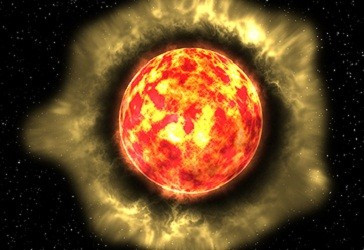Astronomers Discover Sandstorms in Space

Astronomers have discovered sandstorms in space, according to a report published in the Nature journal.
Astronomers from the University of Sydney and the University of Manchester have discovered sandstorms in space while observing three red giant stars. They have used one of the powerful telescopes in European Southern Observatory in Northern Chile to observe the stars.
The study revealed that super strong sand storms were responsible for removing massive amounts of dust grains around the red stars and the existence of dust grains of nearly a millionth of a metre across, big enough to be pushed out by dying stars' light, according to BBC report.
"The winds that stream from the upper atmosphere of the red giant stars are responsible for removing massive amounts of matter," said Barnaby Norris, researcher at the University of Sydney, in a statement.
According to the astronomers, star grains themselves are transparent like powdered glass, but so incredibly fine so as to appear like smoke. These grains contain majority of the chemical elements critical to the formation of earth-like planets and life come from the winds driven from dying red giant stars.
They claim that Earth and everybody living on it are probably made of the stardust.
The ultimate fate of the star itself can hinge upon the efficiency of the wind. The mass removed by the wind can bring a somewhat heavier star below the critical threshold required to fuel a cataclysmic supernova explosion, defusing the bomb and allowing it to fade away as a white dwarf star.
Researchers claim that this new discovery will give more information about the red giant stars death and it will give us more information on how these old, dying stars manage to drive such powerful winds.
"The grains that we have discovered here will come as a real shock to the accepted wisdom in the field. They are both much larger and much closer to the stellar surface than anyone expected," said Norris.
"Hopefully our findings will help to illuminate a key step in the grand cycle as matter is expelled from stars into the galaxy only to seed new generations of stellar and planetary birth," he concluded.
© Copyright IBTimes 2025. All rights reserved.





















